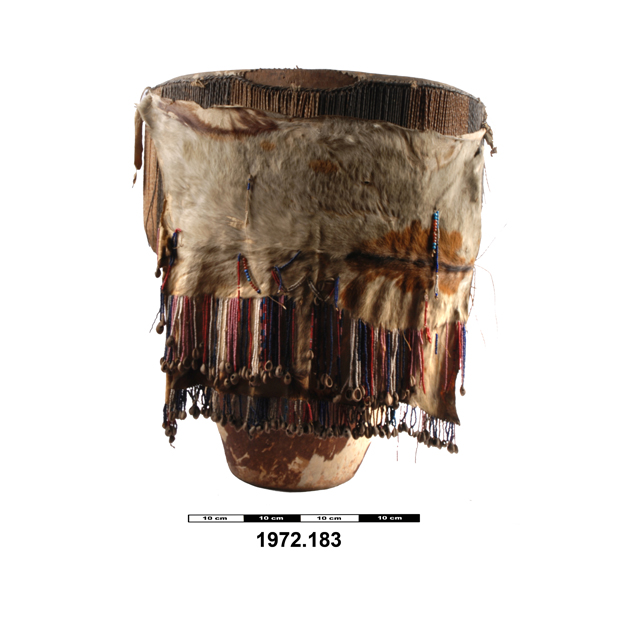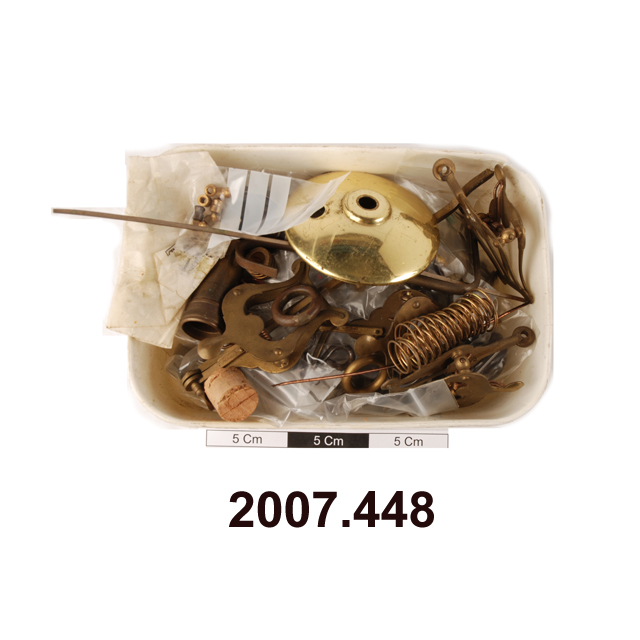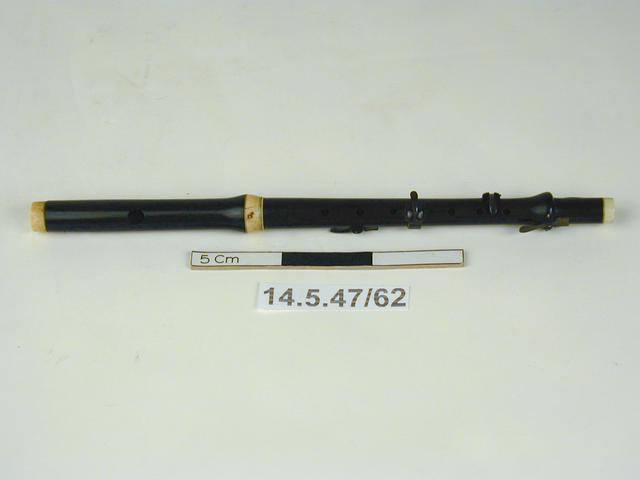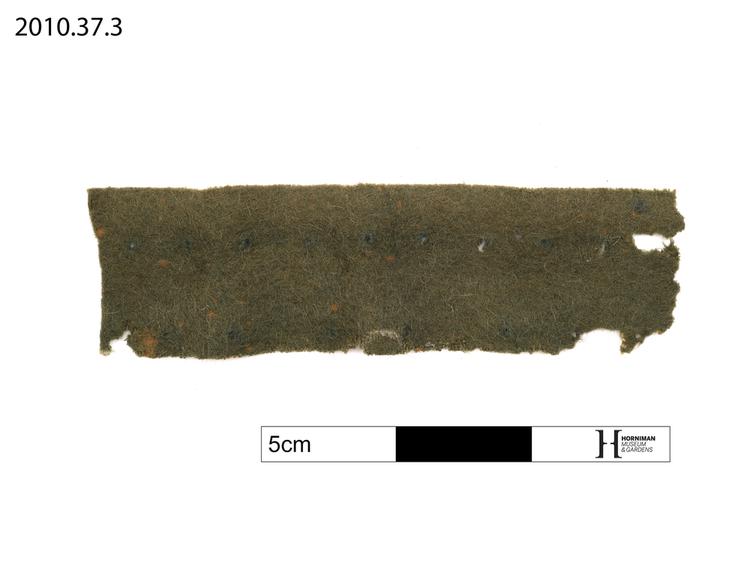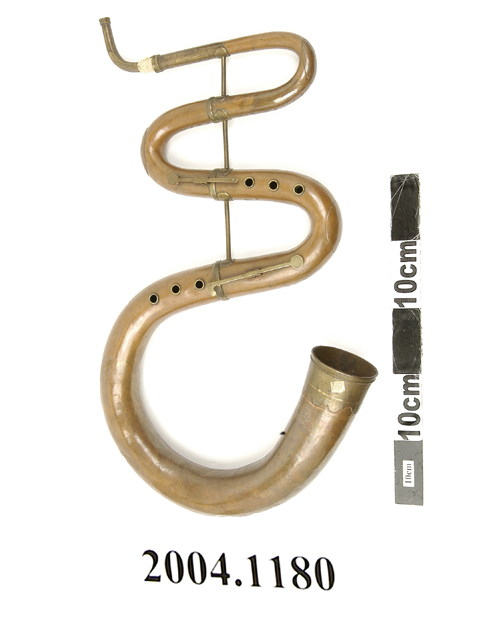
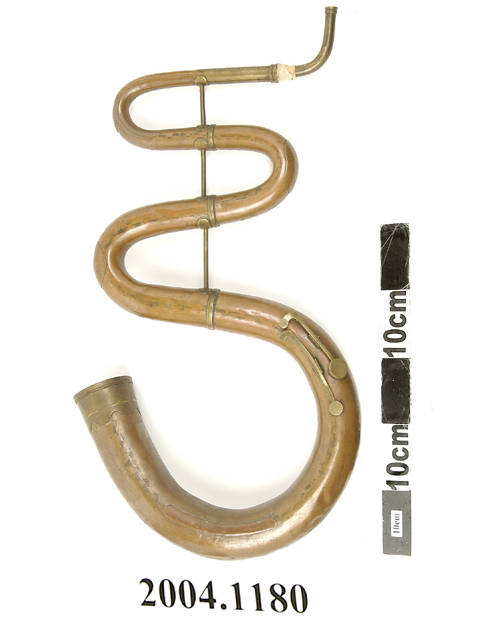
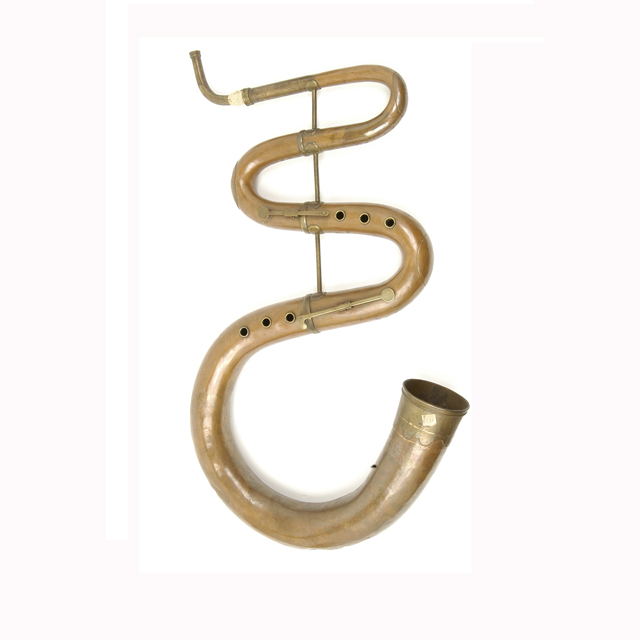
Serpent. Copper tubing with brass keys, ferrules, stays, finger hole bushes, bell garland and crook. Four keys, saddle mounted with leather pads. Six finger holes. Body is made in four sections with each bow formed separately and stays supporting the upper three.
The serpent is a lip activated wind instrument (so is classified as a brass instrument) with tone holes in the body to adjust the pitch. They were originally employed to accompany Gregorian chanting in churches. In the 18th century the serpent was adopted by many military bands, where it was popular until the mid-19th century when it was replaced by valved brass instruments. Most serpents were made from wood with a leather covering, and metal versions are rare. The earliest known makers of metal serpents were August Grenser of Dresden and Feidhart of Leipzig. The Edinburgh University Collection of Historic Musical Instruments contains a copper serpent made by Joseph Taylor of Glasgow, although unlike this instrument, that example is designed to be played left handed.



